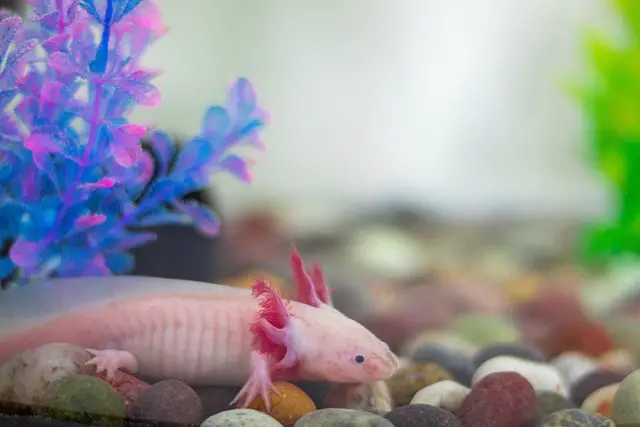Owners of the axolotl, a type of salamander found in Mexico, often worry if their pet can jump out of its tank. After all, these aquatic creatures are curious and have been known to explore their environment. So let’s look at what makes the axolotl so unique and how it might affect its ability to make a daring escape.
Can an axolotl jump out of a tank?
When answering whether an axolotl can jump out of a tank, the answer is a bit complicated.
While these amphibians can jump, it’s doubtful they could do so in a tank.
These animals have limited hind legs for locomotion and prefer to move about by crawling or swimming underwater.
Therefore, for an axolotl to jump out of a tank, the surface area must be more accessible than most traditional aquariums allow.
Just like with most other animals, their ability to escape confines depends mainly on environment and size restriction – small tanks have higher chances of granting them success.
Suppose you’re considering putting an axolotl into your tank at home but are worried that it might be one day attempt and succeed in an escape. In that case, it’s best practice to ensure that all sides remain securely locked and the water is changed regularly to prevent irritation.
Axolotls Are Aquatic Creatures
Axolotls live in fresh water and can survive in temperatures ranging from 15-20°C (60-68°F). Their gills allow them to breathe underwater and absorb most of the oxygen they need through their skin while submerged.
However, they are not as adept at breathing on land. Because of this, axolotls typically stick close to their aquatic habitats.
Can Axolotls Jump?
Axolotls do have some control over where they move within the tank by swimming or crawling around with their limbs.
But can they jump?
The short answer is no—axolotls don’t have the muscle strength necessary for jumping like other amphibians, such as frogs or toads.
If you leave your tank open for too long or forget to secure it properly after cleaning it out, your axolotl may be tempted to explore beyond its boundaries.
The Gecko Effect
Axolotls also lack the muscles that help them climb up walls or surfaces like geckos do with their sticky feet. This means that if your axolotl does manage to get out of its tank somehow, it won’t be able to cling onto any nearby surfaces either. It will likely stay close by, though, since it will be exposed to air temperatures too cool for its liking without access to water.
Conclusion.
Though unlikely due to their lack of jumping ability and climbing strength, an axolotl can escape its tank given enough motivation or opportunity. Therefore, always keep your tank securely covered and check that all lids are tightly closed before leaving the room. That way, your pet will remain safe inside where it belongs.





